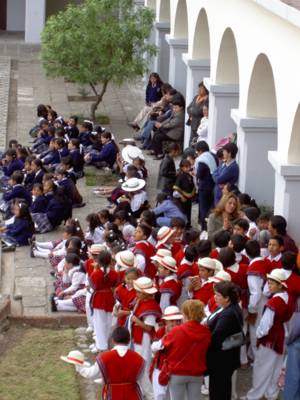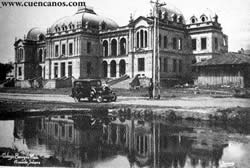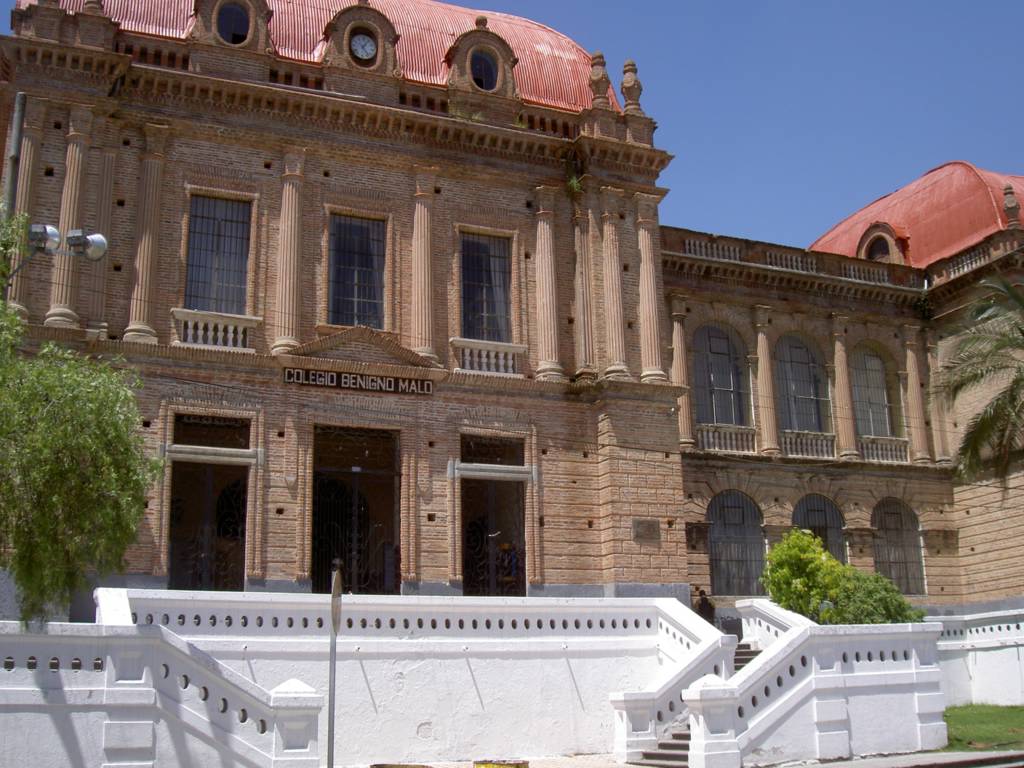We actually arrived in Cuenca the weekend before the school year started. Over the course of that first weekend, Calliope's grasp of Spanish grew from exactly nothing to "Where's the bathroom". Although I was quite pleased with her progress, I was concerned that if I tried to enroll her in a regular high school, she would get bored after locating the girl's bathroom(s).
Although TM's report cards from the last few years indicate that he has completed both Spanish I and II, I was never able to get him to actually utter a complete sentence in Spanish during that time period. I want some independent verification that he can speak Spanish, before putting him in a local school.
So what's a mother to do? Enroll them in public school, of course. But only after some one-to-one Spanish lessons.
The school system in Ecuador is a bit different than it is in the U.S. First off, there aren't that many public schools and a large segment of the population looks down their noses at them. The private schools are generally Catholic schools, many single-sex, and most with uniforms.

A "collegio" here in Ecuador is a combination of junior-high and high school. What level should I put them in? Which ones would let students start in the middle of the year and attend for just a month or two? Which ones wouldn't mind the disruption of foreigners in their classrooms? And with the potential cost of school uniforms, gym uniforms, books, tuition, and registration, would I be able to compare costs?
I decided NOT to undertake such a large research project. My own Spanish would have improved greatly, but I probably wouldn't have drawn a final conclusion until after leaving the country. Instead I followed my nose and took any help offered by others. Yesterday, Patricia, Calliope's new Spanish teacher and the parent of a Benigno Malo student, the sister of a Benigno Malo student as well as a friend of the Director there, offered to take Calliope and me to visit Benigno Malo. TM decided that he did not want to attend high school (the word lazy comes to mind, but I am withholding judgment for the moment).
The school itself was architecturally magnificent, although in a state of decay.


And it felt like a high school - bricks on the outside, squeaky wooden floors on the inside, and large hallways. Until about 10 or 15 years ago, it was an all-boys school and continues today with a ratio of about 4 boys to every girl.
After about a 3 minute interview with the Director, during which he learned Calliope's first name and told us which class had other foreign students, we were shuffled off with Franklyn, the Student Council President. Calliope would be in a class of sixth-level students, which I believe is the equivalent of high school seniors, which means that she would be 3 or 4 years younger than the rest of her class. We chatted with Franklyn, met a few students, and toured the grounds until recess was over. As the students returned to class, Franklyn introduced Calliope to the other foreign students and then formally presented her to rest of the class.
That was it. In Ecuador, I am asked to provide my passport number when I visit the Modern Art Museum, or when I buy a bus ticket, or even when I ask for a receipt after a purchase. However, Benigno Malo did not request any form of identification. There was no paperwork and there were no registration fees. Nobody ever took down our full names, address, or phone number. That was a relief, since our address is unknown and we don't have a telephone.
That was yesterday. Today, Calliope attended her first day of school. She got up on her own at 5:30AM so she could get to school by 7:00AM. School is generally out at 12:40. Today they got out early, since the professor for their last period rarely shows up on Tuesdays!!? She made a couple of friends and is charged up for tomorrow. TM now thinks he might like to go to school as well. Yay!

No comments:
Post a Comment